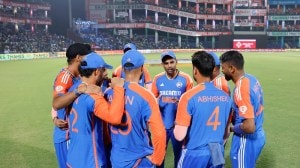Dal vs carbs: Should you be having it for weight loss?
Dieticians insist that dal, a plant protein source, should be a part of a balanced diet
 While dal is rich in the amino acid lysine, it’s often deficient in methionine and cysteine, while rice is deficient in lysine. (Source: Pixabay)
While dal is rich in the amino acid lysine, it’s often deficient in methionine and cysteine, while rice is deficient in lysine. (Source: Pixabay)Should the good old bowl of dal, that’s a staple of a balanced Indian meal, be now questioned for its carbohydrate content? Fitness-conscious youngsters, while choosing protein-rich plant foods, are crossing out dal for its carbohydrate content. “This is the greatest myth going around. Of course, dal has carbs but they are very negligible compared to the larger carbohydrate intake we have daily. The key aspect of weight loss is to keep to your daily calorie allowance and cut pure carbohydrates rather than eliminate a source of protein,” says Dr Seema Gulati of the National Diabetes, Obesity and Cholesterol Foundation (NDOC) Centre for Nutrition Research, Delhi.
What is the carbohydrate content of dal?
Dr Gulati says that the accepted reference of any kind of dal is 30 g, which when cooked would amount to a small katori (bowl). “A 30 g serving of dal (lentils) typically contains around 6-7 grams of protein. The exact amount can vary slightly based on the type of dal and how it’s cooked. For example, toor dal (pigeon peas) and moong dal (green gram) both offer around 6.5-6.7 grams of protein per 30 g serving,” she says. Now 30 g of dal, depending on the type used, can contain anything between 10 to 14 gm of carbohydrates when cooked. “Cereals have more carbs, and that is what we need to reduce, not the bowl of dal, whose carb load is unlikely to make a significant difference to your calorie intake and which has more nutrients that your body needs,” she says.
Dal has complex carbohydrates
Scientific meta analyses have shown how pulses and legumes are associated with a lower risk of obesity and diabetes, according to Dr Gulati. She lists several pluses of dal. On carbohydrates, she explains, “Dal is rich in complex carbohydrates, which are digested slower than simple carbohydrates, leading to a more stable and sustained release of blood sugar and energy. When consumed as part of a balanced meal with vegetables and other foods, the carbohydrates in dal are less likely to cause issues.”
Why dal is nutrient-dense
Dr Gulati feels that most overlook the fact that dal is a very good source of dietary fibre, which helps with digestion, promotes satiety, eliminates hunger pangs and can help regulate blood sugar levels. “Besides proteins and carbohydrates, dal is a storehouse of vitamins and minerals. Dals are particularly rich in folate, iron, potassium and magnesium, as well as B vitamins like thiamine. They also contain smaller amounts of other minerals like phosphorus and zinc. It is low in fat,” says Dr Gulati.
Is dal a complete protein?
No it’s not. “It does not have all nine essential amino acids which the body needs. Which is why in a plant-based diet, it has to be combined with other protein sources, be it quinoa, nuts and seeds,” says Mukta Vashist, consultant dietician at Sir Gangaram Hospital, Delhi.
There is a reason why dal and rice are often combined; they provide complementary protein sources, meaning they provide a more complete set of amino acids than either would alone. “A cup of cooked rice has around 3 grams of protein. While dal is rich in the amino acid lysine, it’s often deficient in methionine and cysteine, while rice is deficient in lysine. Combining them helps the body synthesize proteins more effectively,” explains Vashist. A balanced meal thali was created for a reason.
Photos





- 01
- 02
- 03
- 04
- 05

























